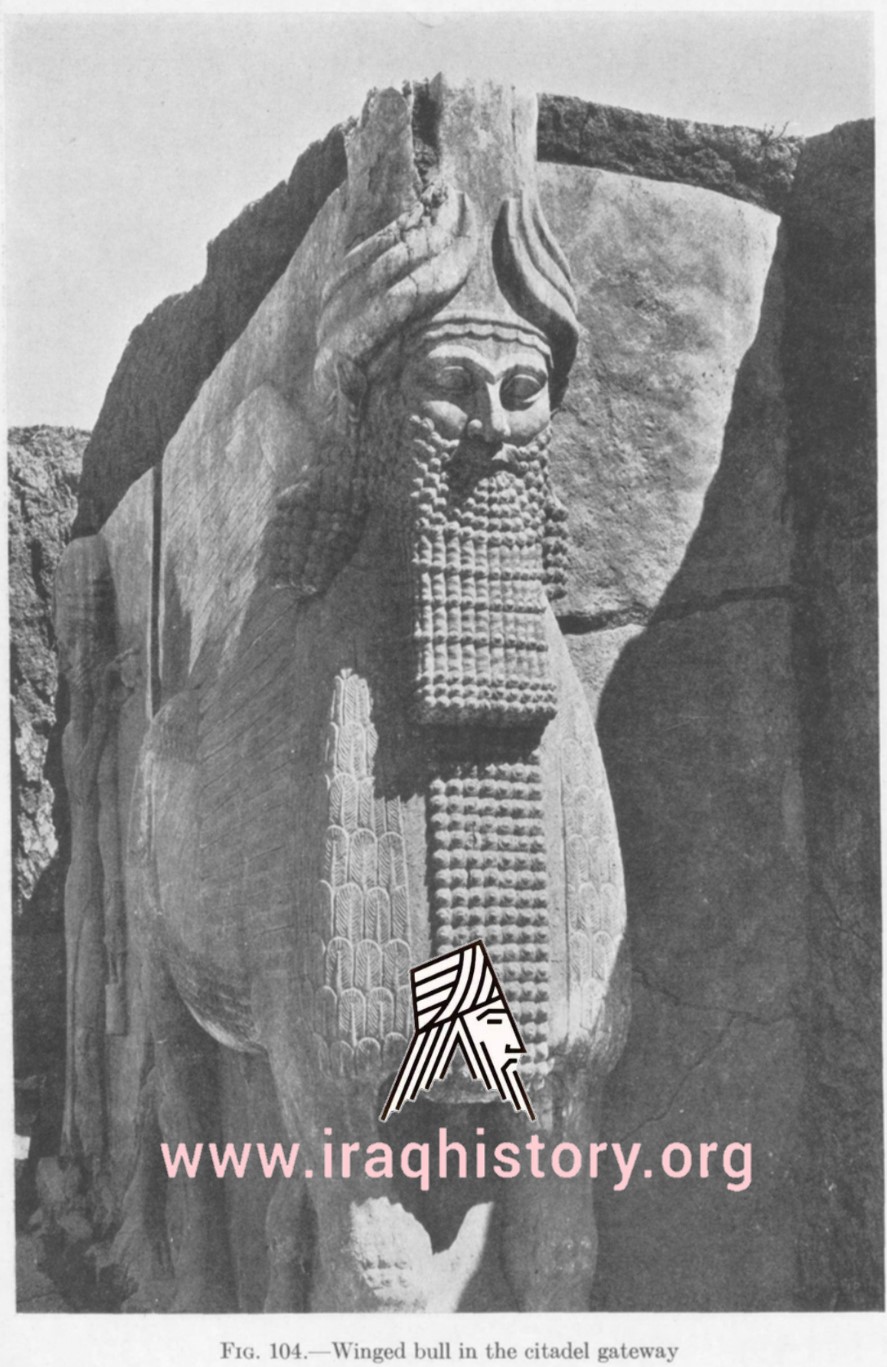The court moved to Dur-Šarruken in 706 BC with great pomp and festivities. However, Sargon died on the battlefield in the following year. His son and successor Sennacherib (704-681 BC) chose to leave Dur-Šarruken. He moved his court and central administration to Nineveh, the natural capital of the Assyrian Empire. But the experiment of Dur-Šarruken was not completely reversed: the province existed until the end of the Assyrian state and the city retained its role as provincial centre.
“Sargon, king of the world, king of Assyria (says): ‘Because I wanted to, I built a city. Dur-Šarruken (i.e. Sargon’s Fortress) I called its name. An ideal palace which in the four quarters (of the world) does not have one rivalling it I built in its midst.’
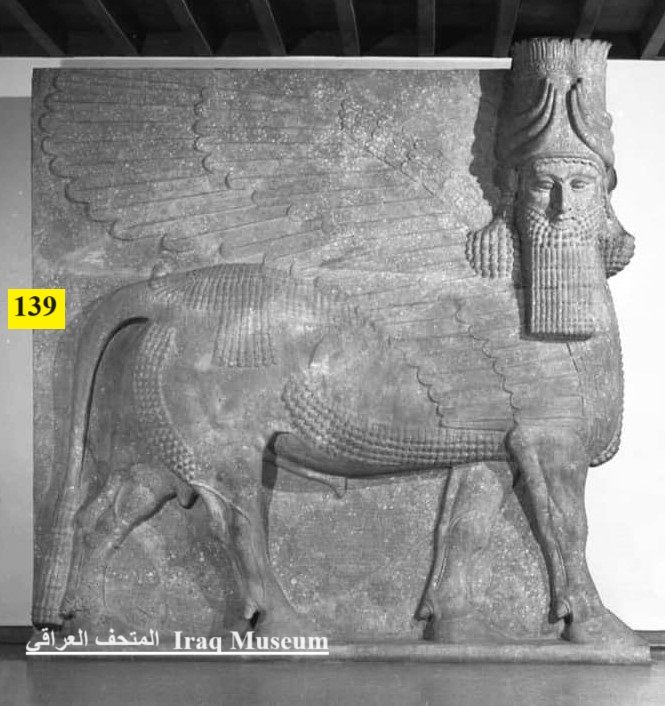
A winged bull (Lamasu) found in 1930 by the University of Chicago Oriental Institute expedition in Dorshroken (Khorsabad) guarding the gate of the throne hall of Assyrian king Shrokin (Sargon II 722-705 BC) / displayed in the University of Chicago Museum. This model of winged bulls with a curled face has only been found a few and one of them is on display at the Louvre Museum in Paris.
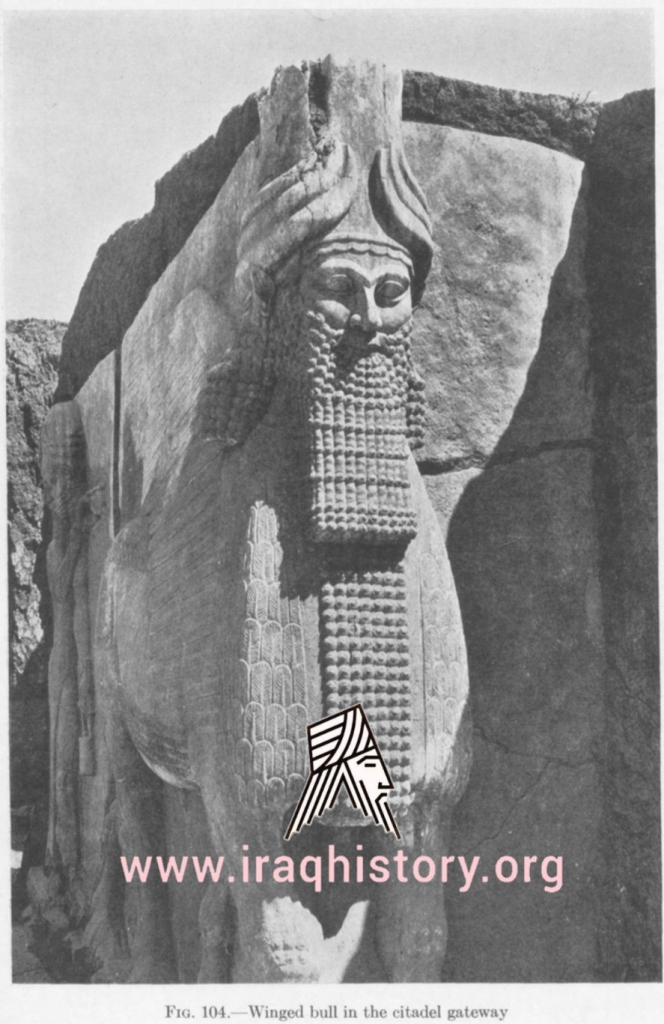

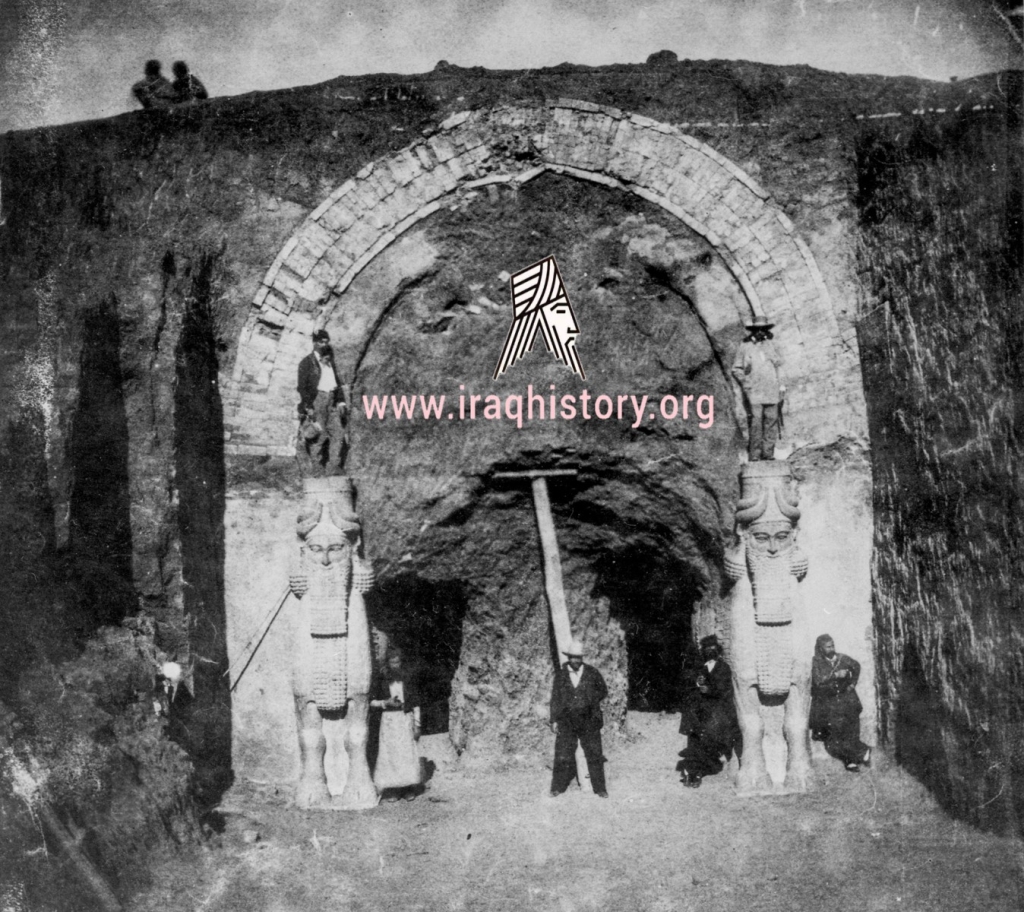
Victor Blass and Gabriel Transand, fully excavated façade bulls. The excavation team in the role of Shruken in front of City Gate 3.
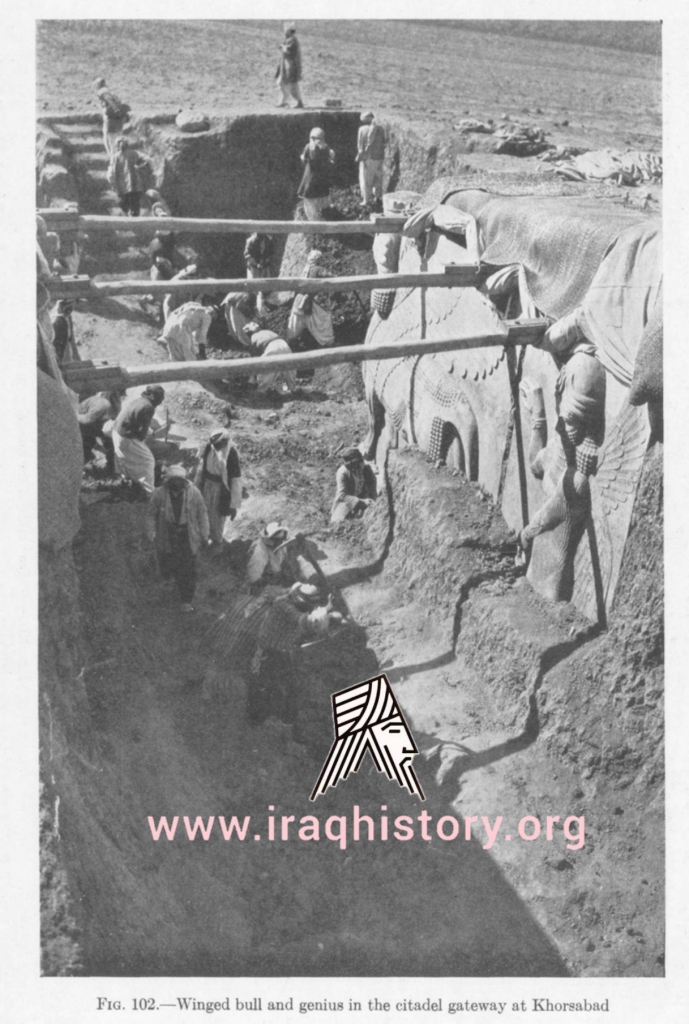
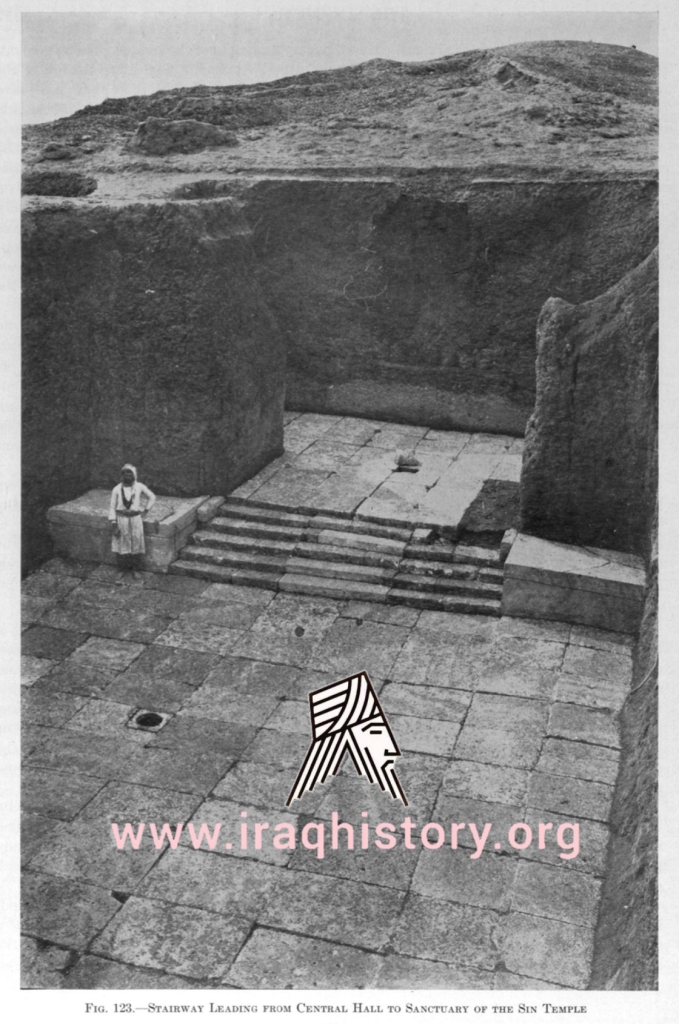
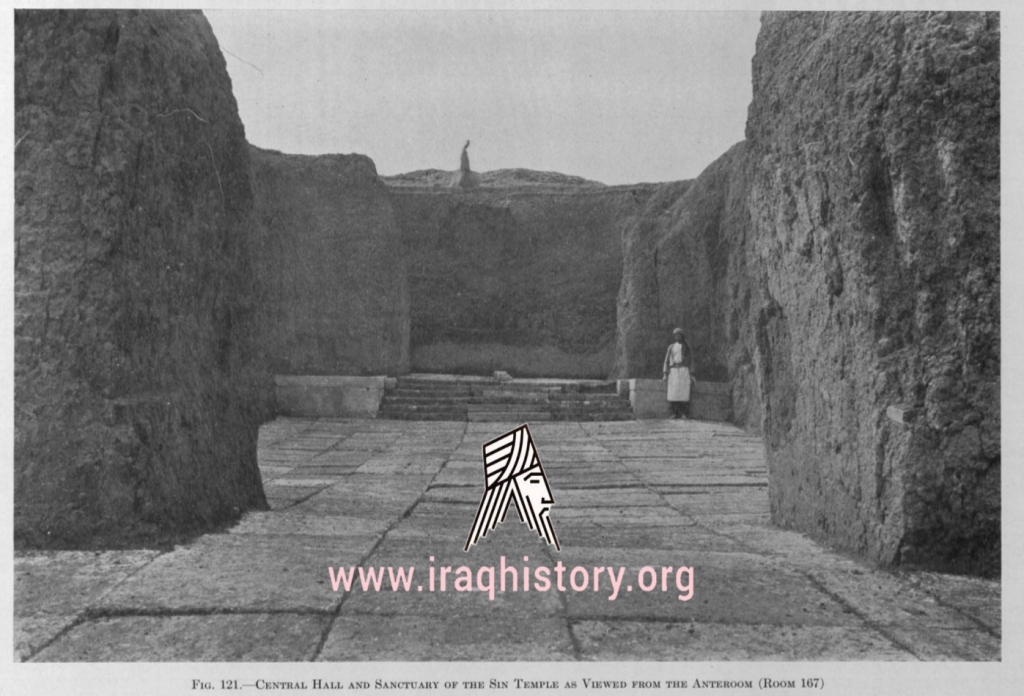
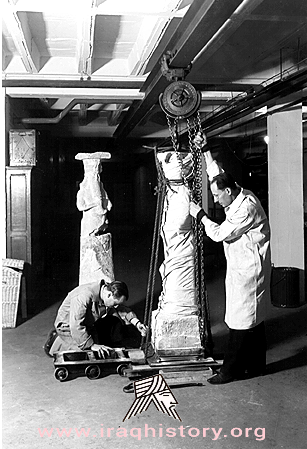

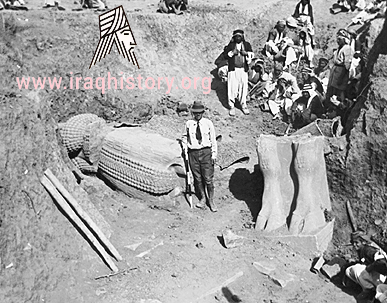
Assyrian art and architecture.
In 1957, archaeologists from the Iraqi Department Antiquities, led by Fuad Safar excavated at the site, uncovering the temple of Sibitti.
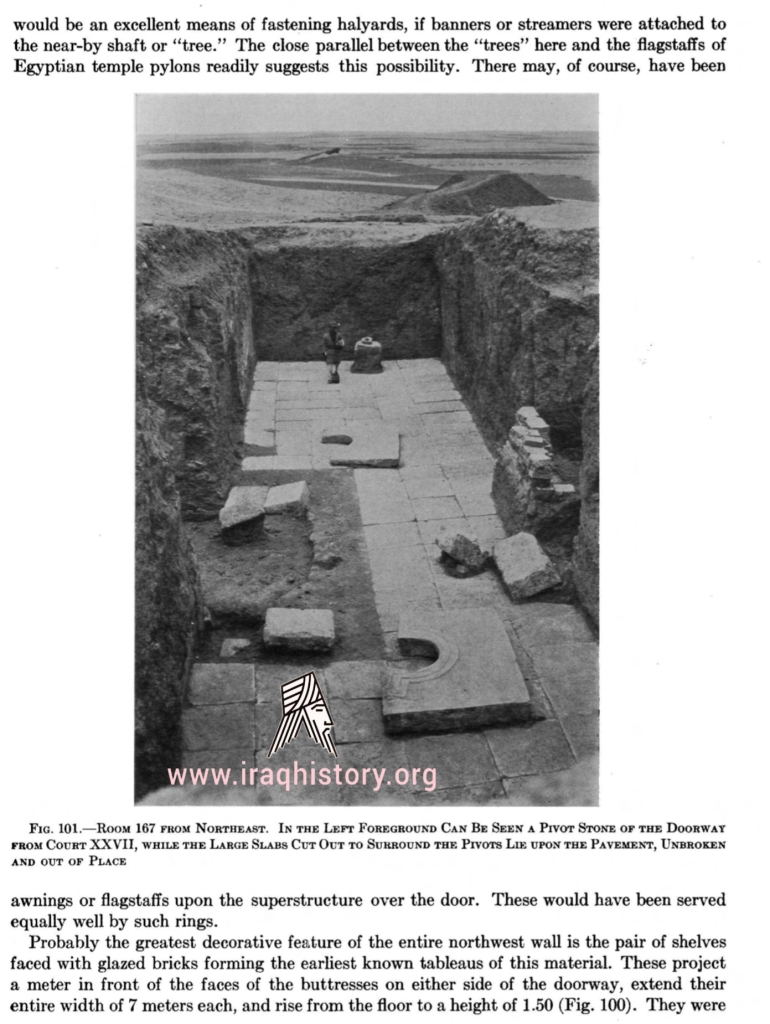
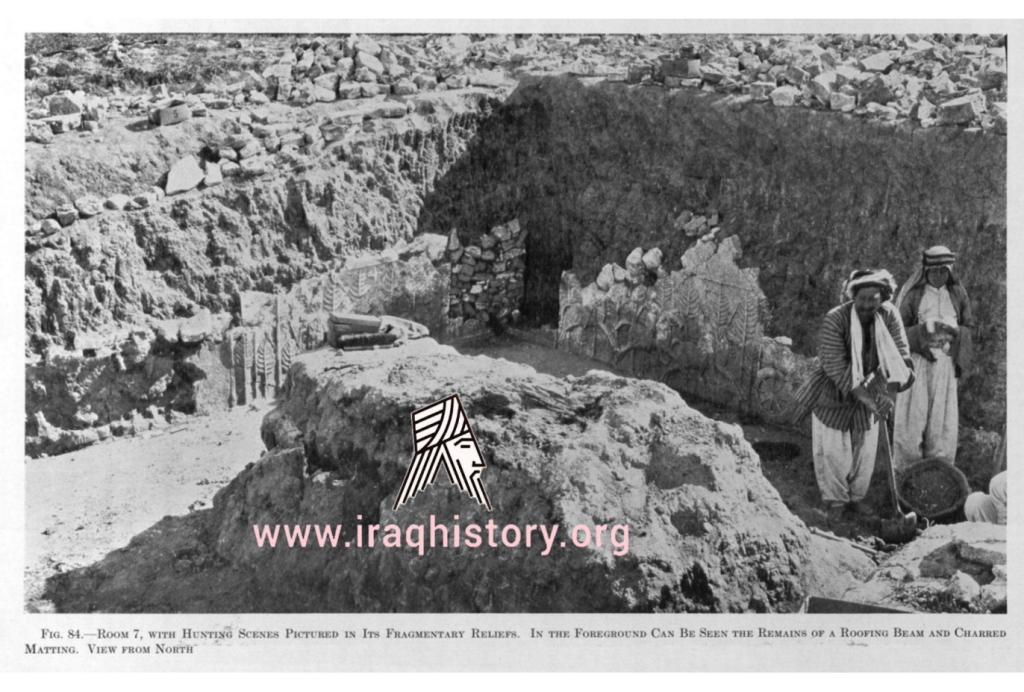
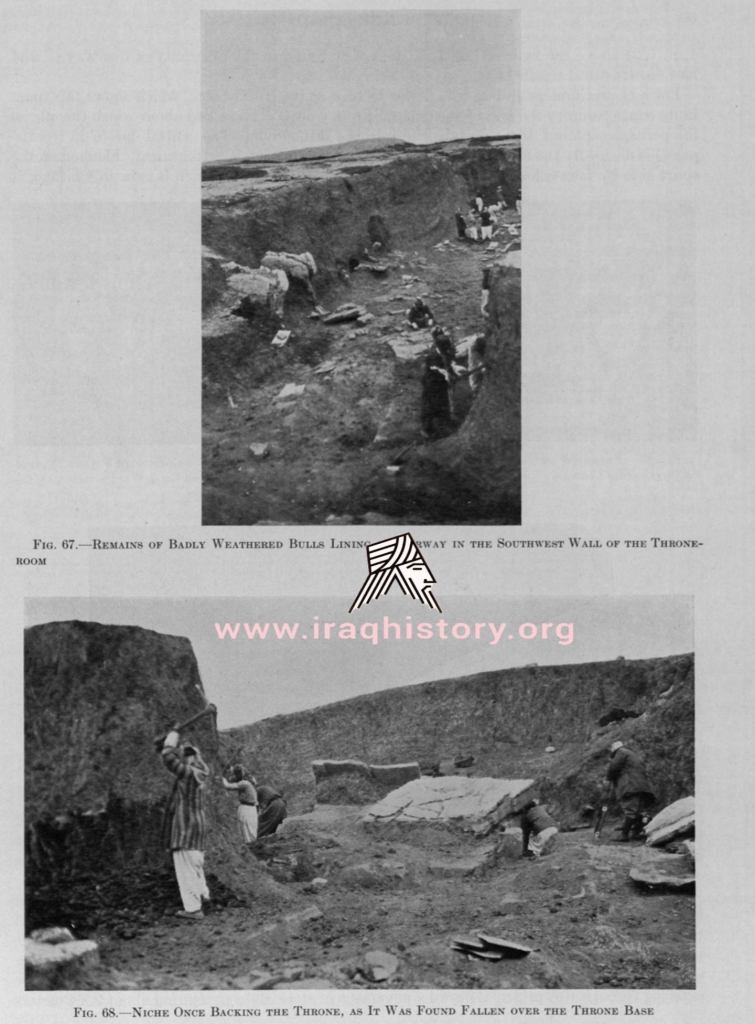
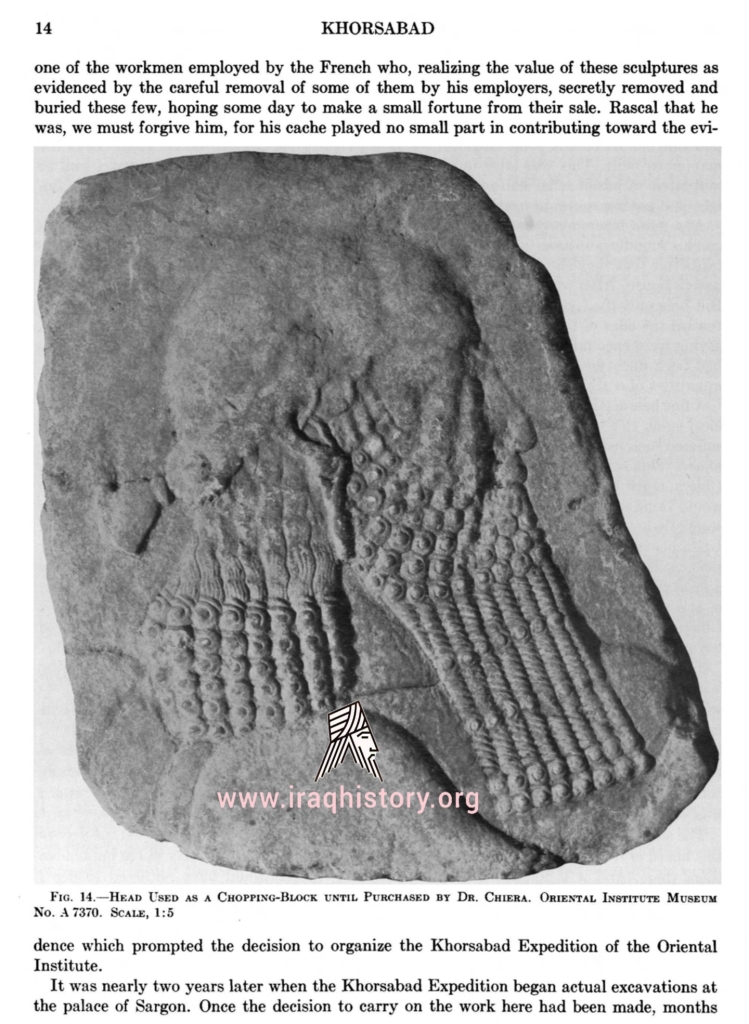
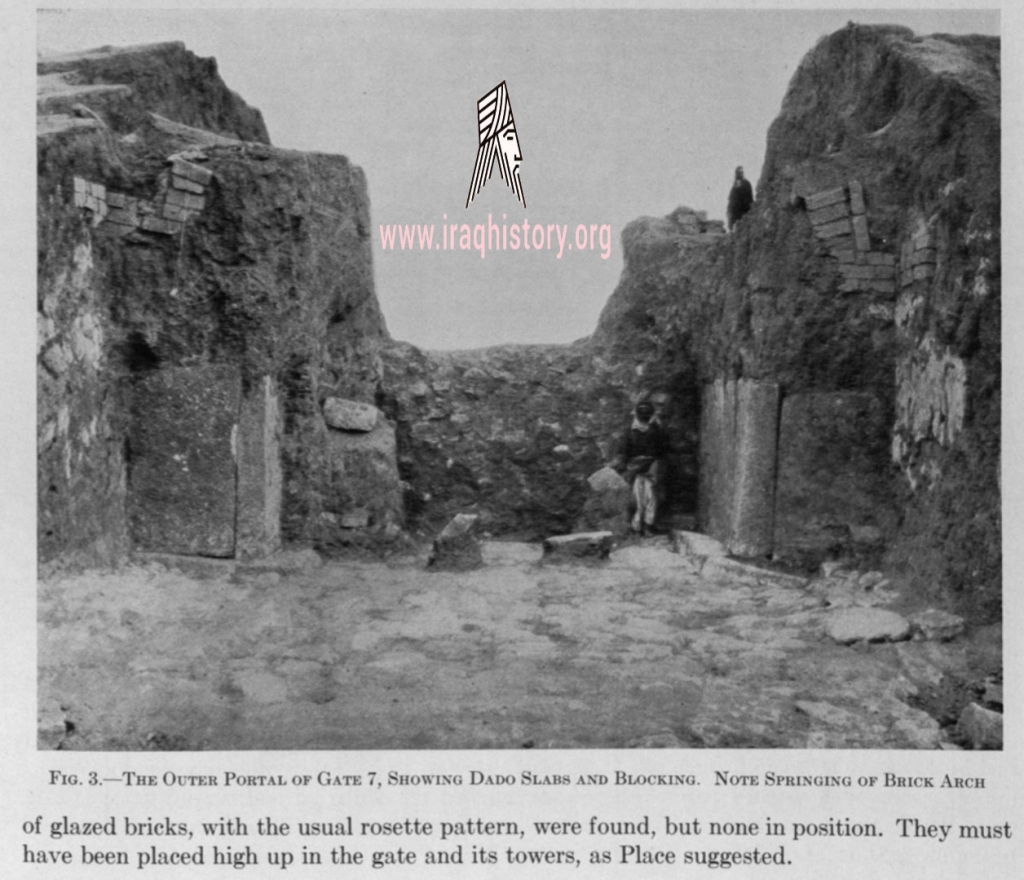
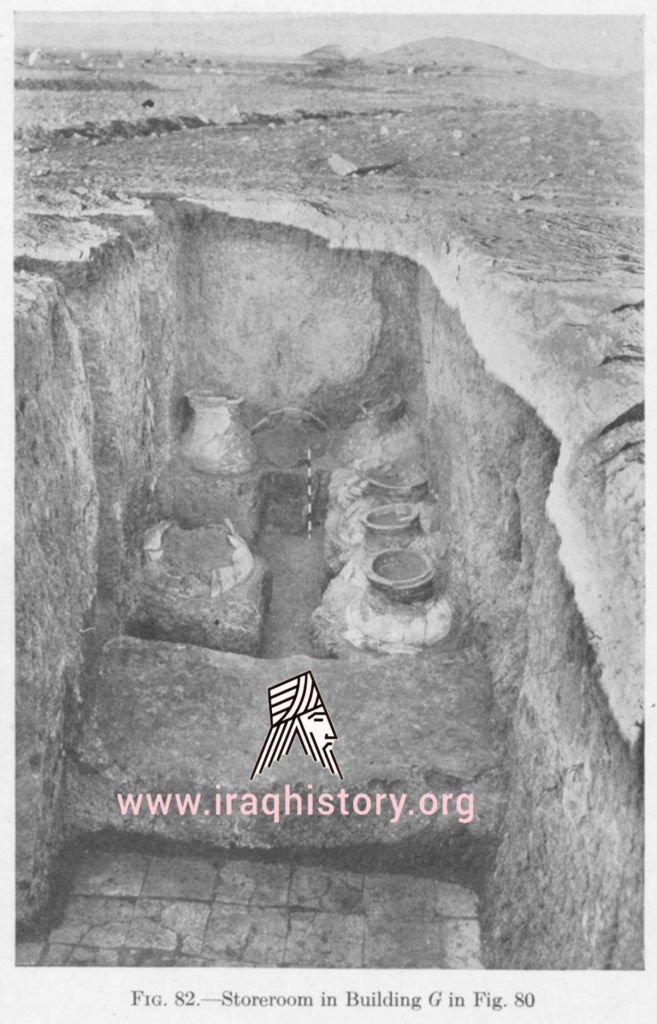
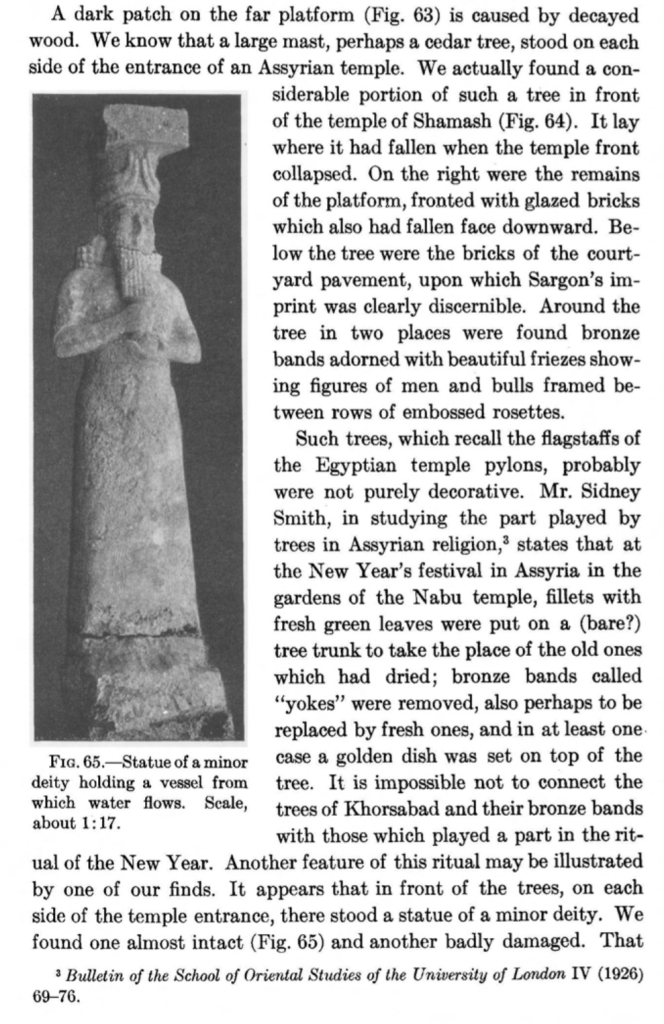
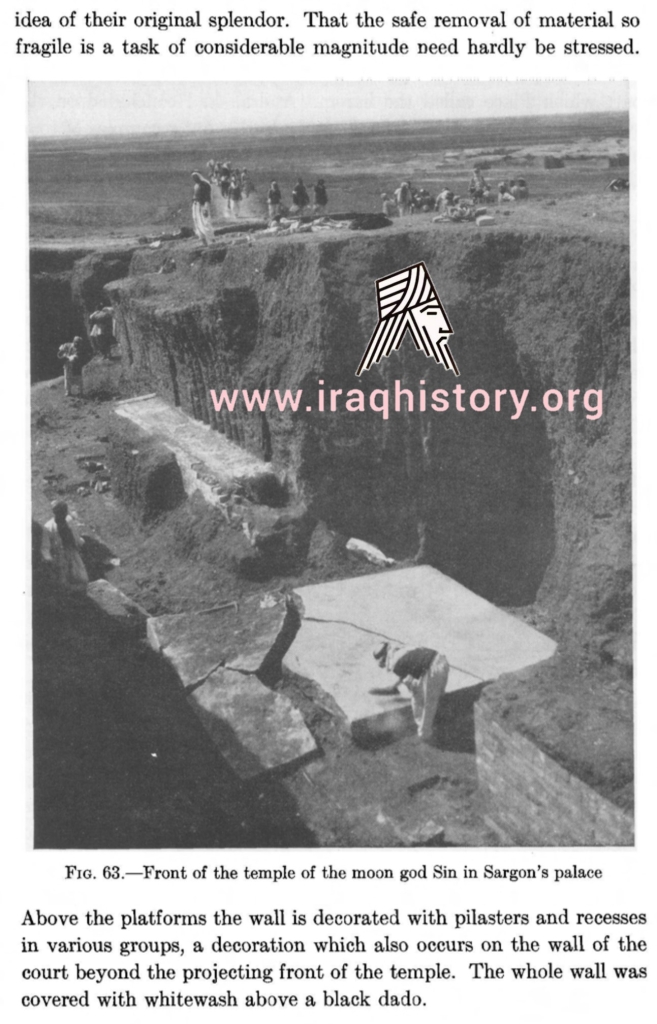
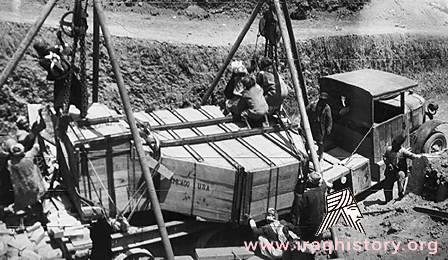
Transfer of Dur Shrukin winged bulls
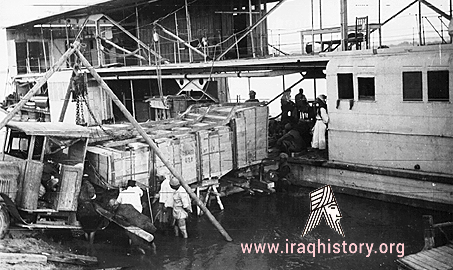

The site of Khorsabad was excavated between 1928–1935 by American archaeologists from the Oriental Institute in Chicago. Work in the first season was led by Edward Chiera and concentrated on the palace area. A colossal bull estimated to weigh 40 tons was uncovered outside the throne room. It was found split into three large fragments. The torso alone weighed about 20 tons. This was shipped to Chicago.
The preparation and shipment of the bull back to the Oriental Institute was incredibly arduous. The remaining seasons were led by Gordon Loud and Hamilton Darby. Their work examined one of the city gates, continued work at the palace, and excavated extensively at the palace’s temple complex. Since Dur-Sharrukin was a single-period site that was evacuated in an orderly manner after the death of Sargon II, few individual objects were found. The primary discoveries from Khorsabad shed light on Assy
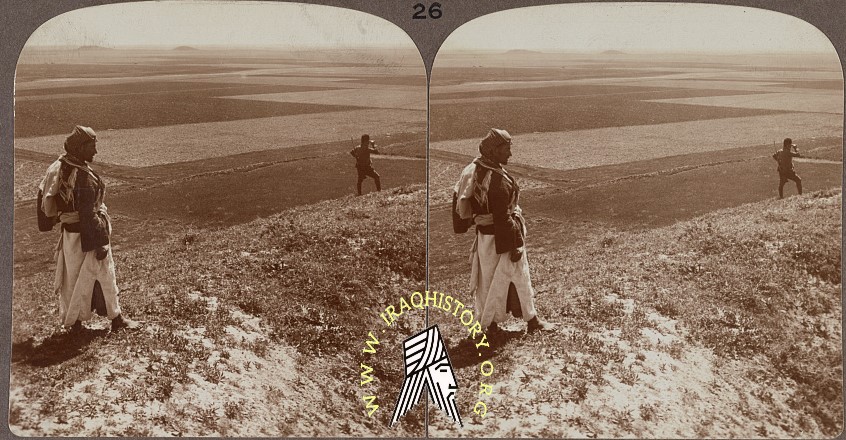
from Sargon’s fortress over plain to site of Nineveh


